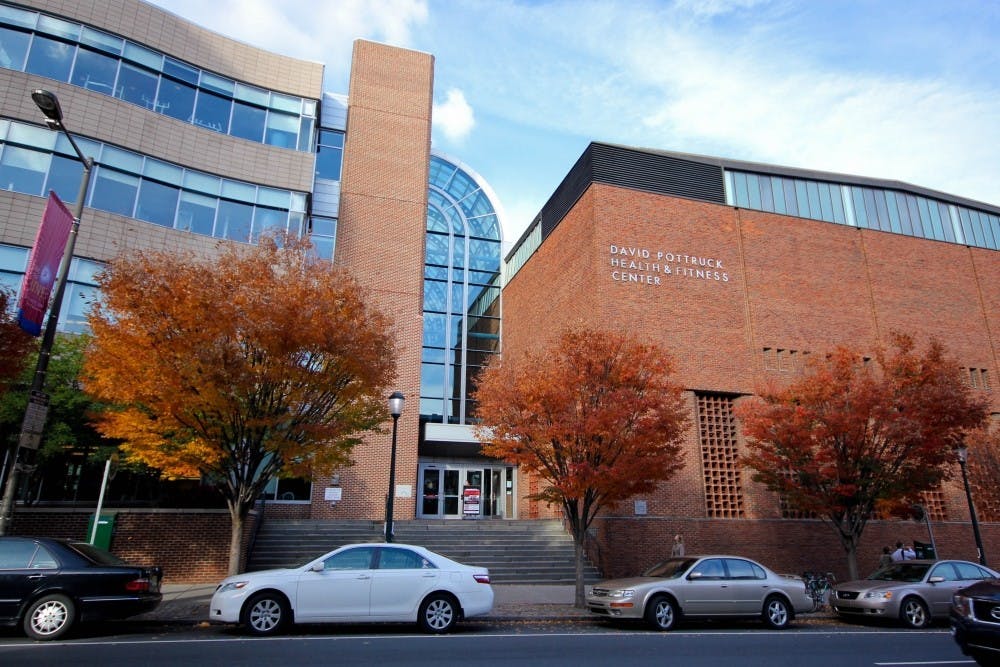
Almost all of the 3,000 Ph.D. students will be fully funded for four to five years, and graduate fees will now include access to Penn's fitness centers.
Credit: File PhotoGraduate student fees will now include access to Pottruck Health and Fitness Center and other fitness facilities, starting in the next fiscal year.
The announcement came among an extended discussion of next year’s budget at a University Council meeting late last month.
At the meeting on March 22, Bonnie Gibson, vice president for budget and management analysis, reviewed the budget for fiscal year 2017, potential changes for 2018 and statistics for the financial aid program. Following her presentation, members of the community voiced concerns about research funding and financial aid for graduate and international students.
Gibson said there was $3.47 billion in revenue from the past fiscal year — $1.25 billion from tuition and fees, $928 million from sponsored programs or research and $1.3 billion from the endowment, giftsand other incomes, according to a transcript of the meeting provided by Penn’s Almanac. The expenditures budget was also $3.47 billion: 53 percent goes toward compensation like salaries and benefits, 24 percent goes toward capital expenditures and 22 percent goes toward student aid. Gibson noted that these percentages add up to 99 percent due to rounding.
Gibson also discussed the 3.9 percent increase in total undergraduate charges. The next fiscal year’s undergraduate aid budget is projected to increase by 4 percent to $224 million. Gibson noted that the financial aid budget has had an average growth rate of 8.3 percent annually, increasing by 122 percent in total since 2008.
Gibson reported that 46 percent of undergraduate students receive financial aid packages, in which 47 percent of students on financial aid in the class of 2020 come from families whose income is under $100,000 and 30 percent come from families whose income is over $150,000. The average financial aid package for freshmen was $45,368 this year.
Almost all of the 3,000 Ph.D. students will be fully funded for four to five years, with their funding including full access to Penn’s fitness centers. Gibson noted that tuition for graduate students will increase at the same rate as the undergraduate tuition will.
Following Gibson’s presentation, physics and astronomy graduate student David Sliski said there was a gap between the number of years of guaranteed funding for graduate students and how long it takes to finish their degrees. He also suggested plans to explore other funding options — namely alumni gifts to the departments from which they graduated.
“If there is no extra room [in the budget] to meet this gap between guaranteed years and time of completion, then why can’t we look for this money from people who specifically went through this experience,” Sliski said.
Engineering junior Dhruv Agarwal also discussed how Penn is “need-aware” when looking at the applications of international students, which discourages them from applying for financial aid.
David Smith, an associate professor of anesthesiology and critical care at Penn Medicine, asked how Penn was prepared to handle federal cutbacks in research support.
Gibson said she is also concerned about the proposed cuts, but pointed out that roughly 85 percent of Penn’s grants are “in-hand” already, meaning they are certain that the majority of funding for the budget is guaranteed.
The Daily Pennsylvanian is an independent, student-run newspaper. Please consider making a donation to support the coverage that shapes the University. Your generosity ensures a future of strong journalism at Penn.
Donate




